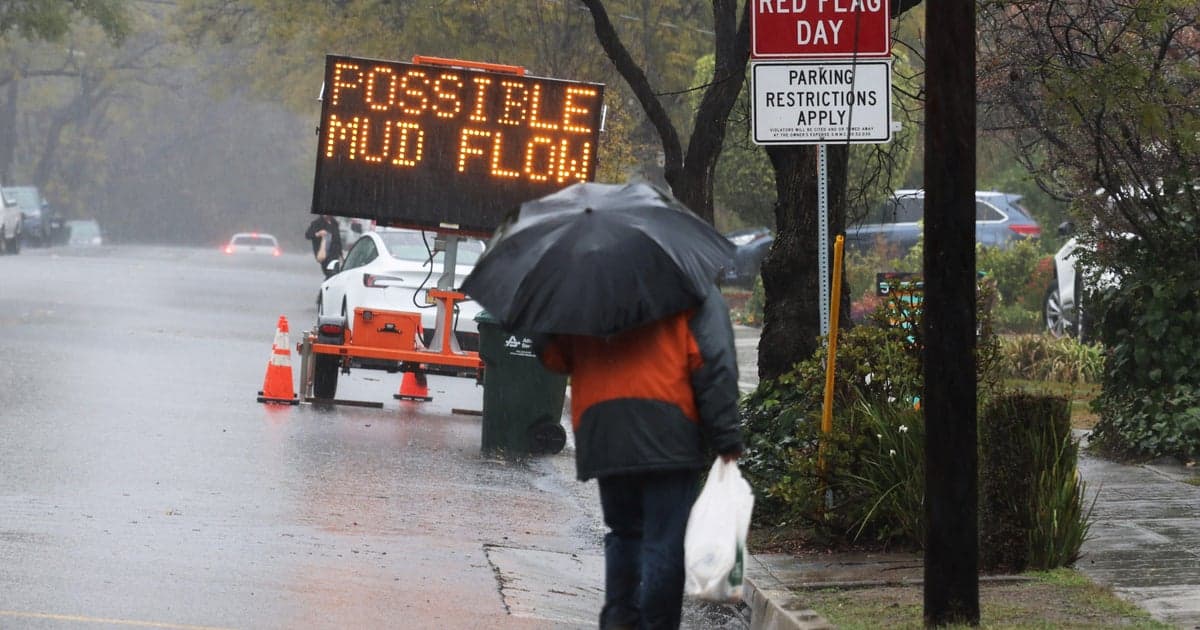Relentless Rain Pummels California, Flash Flood Warnings Force Evacuations
A powerful rainstorm swept across parts of California, prompting flash flood warnings and evacuation orders as communities faced sudden inundation. The episode highlights immediate public health risks, strains on emergency services, and the unequal toll such disasters take on vulnerable residents.
Listen to Article
Click play to generate audio

A severe rainstorm pummeled regions of California, CBS News reported, unleashing rapid runoff that led to flash flood warnings and evacuation orders across multiple communities. Local officials directed residents in low lying areas to leave their homes while emergency responders worked to clear roads and reach threatened neighborhoods. Hospitals, clinics, and community shelters prepared for an influx of people displaced by rising water and damaged infrastructure.
The immediate public health concerns in events like this are acute and varied. Flooding can cut off access to medical care for people who rely on regular treatments such as dialysis and oxygen therapy. Power outages create life threatening risks for residents who depend on electrically powered medical devices. Sheltering large numbers of people in communal facilities increases the potential for infectious disease spread, complicates care for people with chronic conditions, and strains mental health resources as families cope with loss and uncertainty.
Beyond immediate clinical needs, water and wastewater systems are vulnerable to contamination during heavy rains, raising the risk of gastrointestinal and other waterborne illnesses. Public health departments must quickly monitor water quality, coordinate boil water advisories when necessary, and ensure that displaced households have safe drinking water and supplies. For communities already dealing with limited access to health care, language barriers, or precarious housing, these disruptions magnify health inequities and can lead to longer term declines in well being.
The storm also brought into focus long standing gaps in emergency preparedness and the uneven capacity of local institutions to respond. Rural counties and under resourced urban neighborhoods often lack the same level of staffing, equipment, and sheltering options as wealthier jurisdictions. Residents of mobile home parks, people experiencing homelessness, older adults in congregate care settings, and undocumented immigrants face particular barriers to evacuation and recovery. Ensuring equitable access to emergency transportation, culturally competent shelter services, and clear information in multiple languages is essential to reducing preventable harm.
Healthcare systems face policy and operational challenges during flood events. Maintaining continuity of care requires coordination between hospitals, primary care providers, public health agencies, and social services. Rapid deployment of temporary clinics, flexible use of telehealth where connectivity permits, and emergency waivers that preserve insurance coverage and access to medications are important policy tools. Investing in resilient infrastructure around hospitals and dialysis centers can prevent the sort of disruptions that disproportionately affect medically fragile patients.
As climate scientists have warned, extreme precipitation events are becoming more frequent and intense in many regions, underscoring the need for long term investment in floodplain management, stormwater systems, and emergency response capacity. For policymakers the question is not only how to fund repairs after the next storm, but how to build systems that anticipate and protect the most vulnerable. For communities on the front lines, effective response means rapid lifesaving action today and meaningful planning for a future that will likely bring more storms and more tests of our public health and social safety nets.

